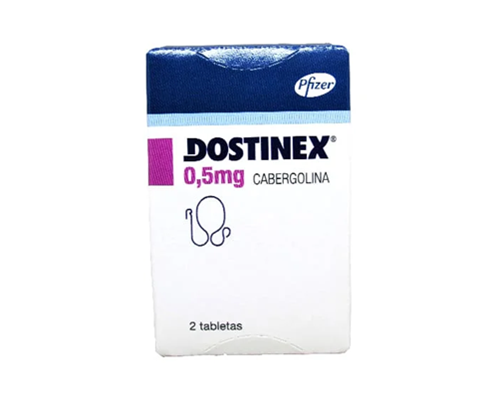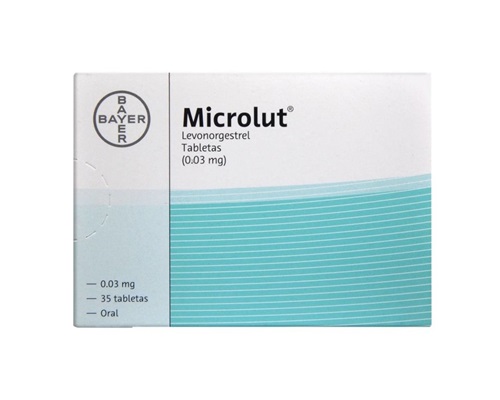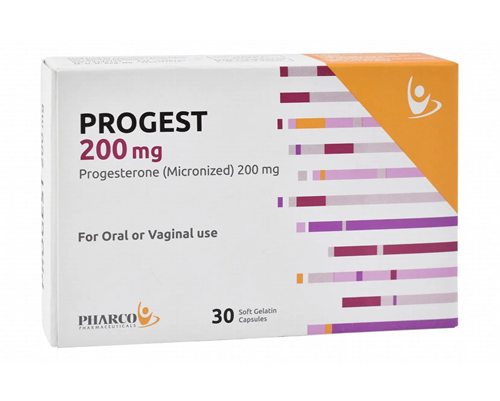Description
Trade name:
Dostinex
Compound:
Each tablet contains:
Cabergoline 0.5 mg
Auxiliary components:
lactose, leucine.
Properties:
Cabergoline is a dopaminergic derivative of ergoline, characterized by a pronounced and prolonged prolactin-lowering effect due to direct stimulation of dopamine D2 receptors of pituitary lactotropic cells. In addition, when taken in doses exceeding those for reducing prolactin concentration in blood plasma, cabergoline has a central dopaminergic effect due to stimulation of dopamine D2 receptors.
A decrease in the concentration of prolactin in the blood plasma is observed within 3 hours after taking the drug and persists for 7-28 days in healthy volunteers and patients with hyperprolactinemia, and up to 14-21 days in women in the postpartum period.
Cabergoline has a strictly selective effect and does not affect the basal secretion of other pituitary hormones or cortisol. The prolactin-lowering effect of cabergoline is dose-dependent in terms of both intensity and duration of action.
Indications:
-prevention of physiological lactation after childbirth;
– suppression of established postpartum lactation;
– treatment of disorders associated with hyperprolactinemia, including amenorrhea, oligomenorrhea, anovulation and galactorrhea;
– prolactin-secreting pituitary adenomas (micro- and macroprolactinomas), idiopathic hyperprolactinemia, empty sella syndrome in combination with hyperprolactinemia.
Method of administration and dosage:
Taken orally, during meals.
Prevention of lactation: 1 mg (2 tablets of 0.5 mg) once on the first day after birth (preferably with the first meal after birth).
Suppression of established lactation: 0.25 mg (1/2 tablet) 2 times a day every 12 hours for 2 days (total dose is 1 mg). In order to reduce the risk of orthostatic arterial hypotension in women, a single dose of cabergoline should not exceed 0.25 mg.
Contraindications:
– hypersensitivity to cabergoline and/or any excipient in the drug, as well as to any ergot alkaloids;
– fibrotic changes in the lungs, pericardium or retroperitoneal space in the anamnesis;
– with long-term therapy: anatomical signs of pathology of the valvular apparatus of the heart (such as thickening of the valve leaflet, narrowing of the valve lumen, mixed pathology – narrowing and stenosis of the valve), confirmed by an echocardiogram study performed before the start of therapy;
– lactose intolerance, lactase deficiency, glucose-galactose malabsorption;
– children and adolescents under 16 years of age (safety and effectiveness of use have not been established);
– pregnancy (due to the lack of clinical data on the efficacy and safety of cabergoline);
– the period of breastfeeding (due to the lack of clinical data on the efficacy and safety of cabergoline).
Precautions:
Before initiating cabergoline therapy for the treatment of hyperprolactinemia-related disorders, a complete evaluation of pituitary function is necessary.
Before initiating long-term therapy with cabergoline, all patients should undergo cardiovascular evaluation, including echocardiography (to exclude asymptomatic heart defects), determination of CRP or other inflammatory markers, chest radiography, pulmonary function testing, and renal function testing.
Side effects:
Mental disorders: often – depression; uncommon – increased libido.
From the nervous system: very often – headache, dizziness/vertigo.
From the cardiovascular system: very often – damage to the heart valves (valvulopathy), including regurgitation.
From the digestive system: very often – nausea, dyspepsia, gastritis, abdominal pain; often – constipation, vomiting.
From the liver and biliary tract: frequency unknown – liver dysfunction.
Storage method:
Store at a temperature not exceeding 30 degrees. In a dry place.
Package:
The cardboard box contains a glass jar with 2 tablets and paper instructions.









